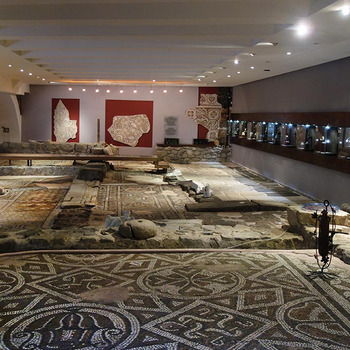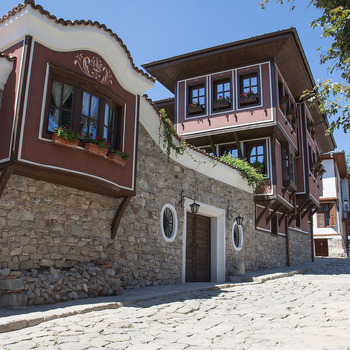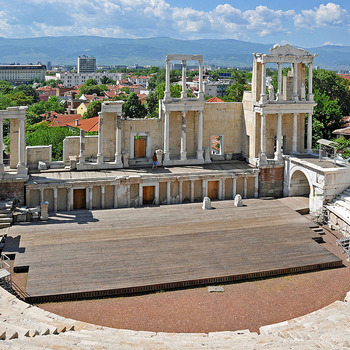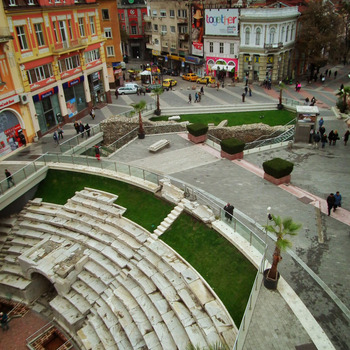Eastern gate of Philippopolis
Overview
The eastern gate of Philippopolis is among the 3 open entrance-exit gates of Ancient Plovdiv.
The main connection between Philippopolis and Byzantium took place through it. It is supposed to have been built in the 2nd century during the reign of Emperor Hadrian and was mainly reconstructed in the 4th century. The complex around the gate was discovered and excavated in the 1970s. Its ruins lie at the northeastern foot of the Plovdiv Three Hills.
The eastern gate of ancient Plovdiv had one central entrance-opening and two side entrances with smaller dimensions. Defensive towers were built on both sides to protect it from possible attacks. The widest city street led to the gate, part of which was discovered during the discovery of the ruins of the gate. It was covered with large syenite blocks and is the only one in the city with sidewalks whose width was 2.60 m, which distinguished it from other roads. with the usual stone curbs. The width of the street exceeded 13 m, and on both sides there were richly decorated colonnades. When the site was discovered, carved tracks were noticed in the pavement of the street, which gives reason to believe that the traffic through the gate with carts and chariots was busy. It is believed that on both sides there were buildings with exquisite Corinthian-style porticos, which, together with the gate, were part of a complete complex. The buildings most likely served as barracks or a military hospital.
The eastern gate of Philippopolis was built in the II century. It was originally built as a marble triumphal arch on the main road to Byzantium, in honor of the visit of Emperor Hadrian. At the first fortification of the plain part of Philippopolis in 172, as a result of the danger of attack by the Marcomanni, it remained outside the enclosures. In the 4th century, however, the construction of a new fortress wall began, from stones and bricks, and the triumphal arch was built into it. In this way it became the new Eastern Gate of Philippopolis, as it is known today. Its old design with one main and two additional entrances has been preserved, but battle towers have been built on both sides to protect it from attacks. Gradually, it became the most important entry-exit point of the ancient city, and its importance grew further after 330, when Emperor Constantine I made Byzantium the capital and renamed it Constantinople.
Recommended
- St. Nedelya Church
- Regional Ethnographic Museum
- The old town of Plovdiv - an architectural reserve
- The small basilica with a baptistery


 Bulgarian
Bulgarian Romanian
Romanian




